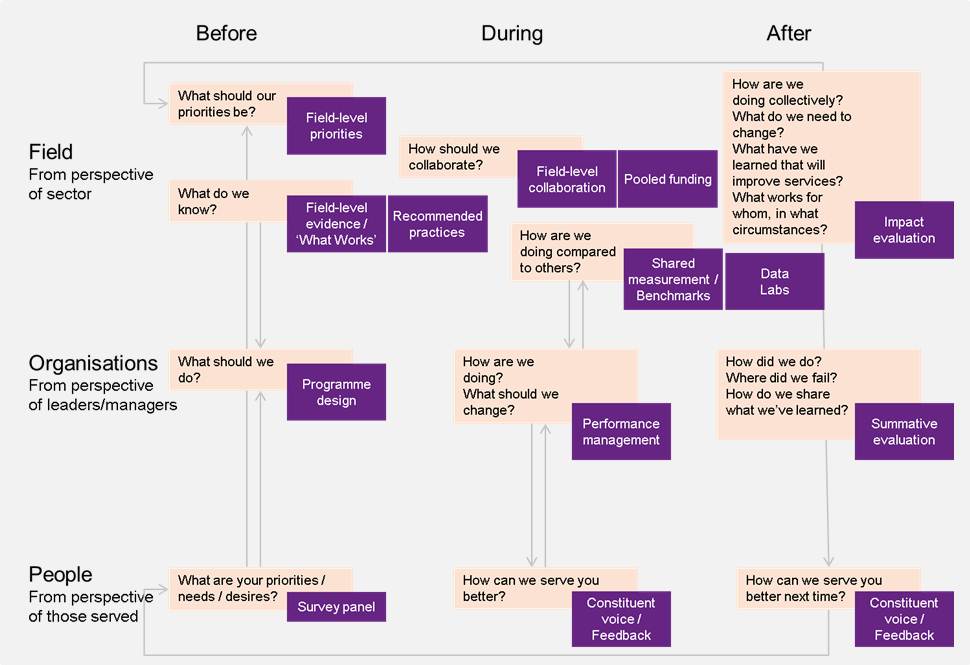In this, the second of two blogs, Tris Lumley presents a new way of looking at impact measurement.
If, as I have argued, the sector’s approach to impact measurement has become too narrow, even stalled, how can we move forward and make sure it is focused on the right things?
Over the next year at New Philanthropy Capital, we will be exploring this question in detail. We’ll be looking at organisations that have harnessed impact measurement to create value in their work, and sharing their insights about how to get there. We’ll be developing thinking on how to ensure that impact measurement can be used to inform strategy, manage performance, and drive improvement.
But in the meantime, it struck me that it might be worth sharing my thinking on what the different purposes of impact measurement might be for different stakeholders in the social sector, and which tools and approaches we might need to meet them.
The diagram included here is a representation of exactly that. It tries to isolate the questions that might be asked at different levels—from an abstracted field level, to the organisation delivering a programme, to those people the organisation aims to serve. And it segments the questions that might be asked at each different level into those that would be asked before a programme is funded or developed, during its delivery, and after it has been delivered. Next to the questions, I have suggested tools that might provide answers—types of approaches to impact measurement.
This sketch of purposes or questions among different stakeholders isn’t intended to be a definitive analysis of the system. It is intended to provoke reflection on the kinds of questions we might actually be trying to answer, at different levels of the system, using impact measurement. It might help to illustrate why it is that we still have a long way to go to make impact measurement live up to its potential.
Until now, it feels like we have sometimes viewed impact measurement too simplistically. Perhaps if we are to move into a new phase for impact measurement, what we need to do is dive into the detail of what questions different people might have, in order to work out what sort of data, and tools, we might need to answer them.
If this picture makes sense to you (or if it doesn’t), please share your thoughts and feedback below in the comments section. I’m grateful to colleagues at NPC and readers of Markets For Good—David Bonbright and Emma Tomkinson (in Australia) in particular—for helping me to develop this to a state I’m happy to share.

